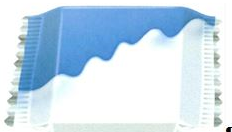In a case pending in the Eastern District of Virginia, set to start trial on June 12, 2017, the defendants filed a motion to transfer the case to the Eastern District of Tennessee following the Supreme Court’s decision in TC Heartland LLC v. Kraft Foods Group Brands LLC, No. 16-341, 2017 WL 2216934 (U.S. May 22, 2017). The district court ordered expedited briefing on the issue and ultimately determined that the defendants had waived their right to challenge venue. In particular, according to the district court, “TC Heartland does not qualify for the intervening law exception to waiver because it merely affirms the viability of Fourco [Glass Co. v. Transmirra Products Corp., 353 U.S. 222, 226 (1957)].” Cobalt Boats, LLC v. Sea Ray Boats, Inc., No. 15-cv-21, Opinion & Order at 6 (E.D. Va. June 7, 2017).
Because trial is just around the corner for these defendants, they filed an emergency motion to stay the district court case with the Federal Circuit to allow time to file a Petition for Writ of Mandamus (“Mandamus Petition”). On June 8, 2017, the Federal Circuit denied the motion without prejudice to refiling if defendants filed the Mandamus Petition. Interestingly, however, Judge Newman dissented from the denial, stating unequivocally that TC Heartland “was a change in the law of venue.” In re: Sea Ray Boats, Inc., No. 17-124, Dkt. No. 4 at 3 (Fed. Cir. June 8, 2017) (Newman, J., dissenting). Judge Newman explained that “[t]he processes of law are designed not for the convenience of judges, but as safeguards to litigants and warders of justice.” Id. at 4. Because the change in law “bring[s] the propriety of the current venue directly into question,” Judge Newman believed a stay of the underlying trial was appropriate. Id.
On the morning of June 9, 2017, the defendants filed their Mandamus Petition and renewed their emergency motion to stay the trial.
Updates to this alert will be provided as they become available.
By: Jason Engel and Devon Curtis Beane

